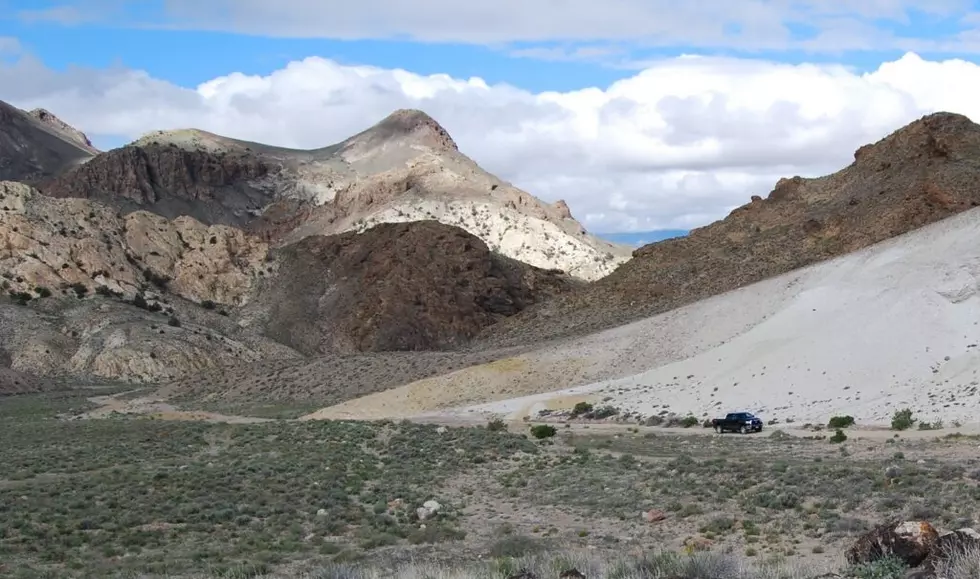
DOE offers contentious Nevada lithium mine $700 million loan
Jeniffer Solis
Citing a need to secure a domestic supply of lithium for electric car batteries, the Biden Administration has pledged $700 million for a planned lithium mine on the habitat of an endangered Nevada wildflower.
On Friday, the U.S. Department of Energy announced it agreed to provide the attractive financing to Australian developer Ioneer Inc. under a “conditional commitment” to develop a lithium mine at Rhyolite Ridge.
The proposed loan would fund up to $700 million with a term of approximately 10 years at interest rates fixed from the date of each advance for the term of the loan and tied to applicable U.S. Treasury rates – that is, interest rates far more favorable than those likely to be obtained in private financial markets.
Bernard Rowe, the managing director of Ioneer, called the federal loan commitment “a significant milestone for Rhyolite Ridge.”
“We look forward to working with the DOE and Sibanye-Stillwater to complete the remaining milestones to start construction of Rhyolite Ridge,” Rowe said in a statement.
In 2021, the mine secured partial funding from South African mining company Sibanye-Stillwater Limited, a mining and metals processing company, under a purchase agreement.
Under the agreement, Sibanye-Stillwater would contribute $490 million to secure a 50% interest in the lithium play, while Ioneer would retain the remaining 50% and operator status.
Combined, the federal loan announced Friday and funding from Sibanye-Stillwater are expected to fund “a substantial part” of the mine’s construction, according to a statement by Ioneer.
However, the loan is subject to a number of conditions before the commitment from DOE becomes effective and funds can advance, including Ioneer obtaining all necessary permits.
One obstacle to the development of the planned lithium mine is the presence of an endangered wildflower unique to Nevada, the Tiehm’s buckwheat. Hundreds of acres of protected habitat also surround the plants. If advanced as planned, the mine would infringe on the only known habitat of the rare desert wildflower.
The endangered species designation does not immediately block the mining project, but could impede permitting and other financing efforts. Federal wildlife managers said that by establishing critical habitat for the species, future development could more effectively plan and design projects while avoiding the destruction of the plant’s habitat.
In a recent analysis, the US Fish and Wildlife Service noted that Ioneer’s latest operations plan for the mine could potentially “disturb and remove up to 38% of the critical habitat for this species, impacting pollinator populations, altering hydrology, removing soil, and risking subsidence.”
The agency concluded the planned scale of the mine, in combination with other threats, would put the wildflower “in danger of extinction throughout all of its range.”
Lithium developer Ioneer has argued its latest operations plan can “successfully coexist” with Tiehm’s buckwheat by avoiding direct impacts to the plant, minimizing indirect impacts, and minimizing disturbance within designated critical habitat.
Conservation advocates with the Center for Biological Diversity, which originally petitioned for the wildflower’s endangered listing, argue Ioneer’s revised mitigation plans would not effectively protect the buckwheat.
Patrick Donnelly, Nevada state director at the Center for Biological Diversity, criticized the federal loan announcement as “a fairly transparent effort by the government to build political momentum for the project and hope that they can steamroll… the US Fish and Wildlife Service and the Endangered Species Act.”
“DOE is basically funding a myth – the myth that the Rhyolite Ridge Mine will be built as proposed,” Donnelly said. “We aim to prevent that with all of the tools at our disposal. We’ve sued or initiated lawsuits over this issue four times already, and we won’t back down until every buckwheat is saved.”
If finalized, the Rhyolite Ridge project could potentially support production of lithium for about 370,000 electric vehicles each year, according to Jigar Shah, the director of the DOE loans programs office. It’s also projected to create up to 600 construction jobs and approximately 250-300 operations jobs.
“This project could reduce annual gasoline consumption by nearly 145 million gallons, and prevent the release of 1.29 million tons of carbon dioxide each year,” Shah said in a release.
The project is part of a broader commitment by the Biden Administration to ensure that half of all new vehicle sales by 2030 are electric and to transition to a net-zero emissions economy by 2050.
This year alone, the Biden administration has awarded $2.8 billion in funding for battery-related mining, processing, and manufacturing. Last year, two new battery manufacturing facilities in Nevada were awarded more than $100 million.
Nevada Democratic Sen. Jacky Rosen applauded the federal “conditional commitment” to give Ioneer the financing.
“As one of the few places in the United States with an abundance of lithium and other critical minerals, Nevada is central to strengthening our domestic clean energy supply chain and making electric vehicles more available and accessible,” Rosen said.
